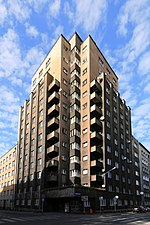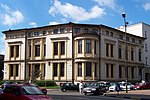Upper Silesian Coal Basin

The Upper Silesian Coal Basin (Polish: Górnośląskie Zagłębie Węglowe, GZW, Czech: Hornoslezská uhelná pánev) is a coal basin in Silesia, in Poland and the Czech Republic.The Basin also contains a number of other minable resources, such as methane, cadmium, lead, silver and zinc. Coal depth is approximately 1000 meters, and contains about 70 billion tons, with excellent extraction potential. Industrial areas within the Upper Silesian Coal Basin: Upper Silesian Industrial Region (Polish: Górnośląski Okręg Przemysłowy, GOP) Rybnik Coal Area (Polish: Rybnicki Okręg Węglowy, ROW) Ostrava-Karviná Coal Area (Czech: Ostravsko-karvinská uhelná pánev)The Upper Silesian Coal Basin lies in the provinces of Upper Silesia and Zagłębie Dąbrowskie in southern Poland, in a highland located between the upper Vistula and the upper Oder rivers, as well as extending into the Moravian-Silesian Region in the Czech Republic. The Upper Silesian Coal Basin includes the Silesian metropolitan area and has a population of 5,294,000 (with 4,311,000 in Poland and 983,000 in the Czech Republic). Area: 5,400 km² (in Poland - 4,500 km², in Czech Republic - 900 km²).
Excerpt from the Wikipedia article Upper Silesian Coal Basin (License: CC BY-SA 3.0, Authors, Images).Upper Silesian Coal Basin
Mikołowska, Katowice Załęska Hałda (Załęska Hałda-Brynów)
Geographical coordinates (GPS) Address Nearby Places Show on map
Geographical coordinates (GPS)
| Latitude | Longitude |
|---|---|
| N 50.25 ° | E 19 ° |
Address
Mikołowska
Mikołowska
40-068 Katowice, Załęska Hałda (Załęska Hałda-Brynów)
Silesian Voivodeship, Poland
Open on Google Maps











